Over the last few decades, individuals such as Vladislav Tretiak have shaped the game of hockey in unbelievable ways. It has often been noted that Tretiak never had a fair shot to compete in the NHL back in the 1980s, but the Russian netminder changed the face of the game for future goaltenders in his 15-plus seasons with the Russian Red Army Team, CSKA Moscow.
Sign up for our NHL History Substack newsletter
Tretiak’s appearances and play in the Olympics, World Championships, Canada Cup, and Summit Series will always be engrained in hockey history and the goalie’s name is rightfully enshrined in the Hockey Hall of Fame as a result of his hard work. Politics and stubbornness (on the part of the Soviet Government) were probably the biggest factors that prevented Tretiak from making an impact at the NHL level, but the goalie managed to cement himself in hockey lore by being a pioneer of the goaltending position and revolutionizing the way that goalies play the position in the modern day.
The Butterfly Style
The story of the butterfly style of goaltending cannot be told without mentioning names such as Glenn Hall, Tony Esposito, and Patrick Roy.
Hall is widely considered by many to be the first goalie to employ and perfect the use of the butterfly style. While others improved on his style of play over the decades, being nicknamed “Mr. Goalie” goes to show how much Hall impacted the game during his career. Hall’s achievements in the NHL speak for themselves, but it is safe to say that North Americans were not prepared to see a Russian goalie take center stage at the World Championships, Olympics, and a plethora of other popular hockey events.
Unlike modern butterfly goalies, Tretiak played a style where he combined new aspects of getting low to the ice with classic stand-up methods. The result was outstanding as the goalie vaulted himself into notoriety during the 1972-1973 hockey season as he put on quite a show during the first Summit Series between Russia and Canada. Fans expected Canada to win handily, but Canadians left the series with a great amount of respect for Tretiak who wowed the crowds with his unbelievable style of play against some of the world’s greatest hockey players.
Tretiak’s use of the butterfly style earned him accolades and recognition around the world as one of the most feared, skilled, and intelligent netminders to have never played a single game in the NHL. Even though Canada emerged victorious against the Soviets, Tretiak dispelled any notion that he was a B-rate goalie as he used a mixture of the butterfly and stand-up styles to distinguish himself from the rest of hockey’s elite netminders.
Vladislav Tretiak – Statistical Success and the Impact of the Summit Series
Not much was known about Tretiak before the 1972 Summit Series, but it is safe to say that many North American hockey fans underestimated the skills of the Russian goalie. Even though Tretiak, who was only 20 years old at the time, played to the tune of a 3.87 GAA and .884 save percentage during the 1972 Summit Series, the goalie impressed many Canadian hockey fans as he stole games from a Canadian team that had an all-star laden lineup. While Tretiak fared a little better during the 1974 Summit Series, it should also be of note that Ken Dryden (4.75 GAA, .838 Save Percentage) and Tony Esposito (3.33 GAA, .882 Save Percentage) did not do much better statistically than Tretiak did in the ’72 Summit Series.
After a hotly contested 1972 matchup between Canada and Russia, the hockey world was not satisfied with just one set of games between the dominant hockey forces of the world. The 1974 Summit Series featured the same home and away format as four games would be played in Canada and the other four in the Soviet Union. After leaving Canada, both teams had a victory and two ties, but it would be the USSR that emerged victorious as the Soviets won three of four games in Russia. Tretiak appeared in seven of the eight games and managed to keep his GAA to a 3.57 clip, but the hype surrounding Russia’s netminder was only starting to grow.
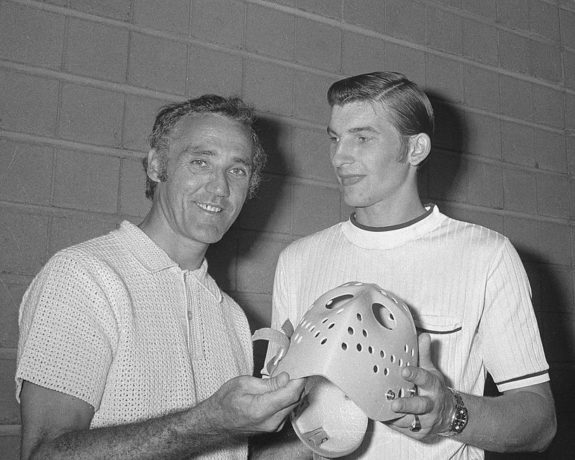
While the USSR dispatched Canada in the ’74 Summit Series, Tretiak’s reputation overseas only grew stronger. The Russian goalie went from a relative unknown to a feared stalwart within a matter of years and it was the goalie’s play that enabled many hockey fans to change their outlook on Russian hockey. Not only did the Summit Series illustrate that future international opponents would have to be much more prepared against the Russian National Team, it provided some much-needed relief during a time when the Cold War crisis was at its peak.
Cold War tensions persisted for more than a decade after Tretiak’s Summit Series debut in 1972, but international hockey provided the USSR and Canada a chance to display their hockey skills to the world. Even if the Summit Series did little to change the perception of the Soviet Union, the play of Tretiak endeared him to hockey fans across the world.
Players such as Valeri Kharlamov, Alexander Gusev, Valery Vasiliev, Boris Mikhailov, Alexander Yakushev, and Vladimir Petrov were just some of the players that dazzled Canadian players and fans with their crisp passing and precision scoring opportunities, but Tretiak certainly came away garnering some great respect from the adversaries and their crowd.
Tretiak’s efforts in the Summit Series and in international play merited him a seventh-round selection by the Montreal Canadiens at the 1983 Draft, but a career in the NHL was not in the workings for the Russian goalie. Even though the two extensive appearances at the ’72 and ’74 Summit Series exposed Tretiak’s abilities and potential, the goaltender put in quite an effort between the ’74 Summit Series and the 1983 Draft to cement his reputation as one of the great goalies of the late twentieth century.
Aside from playing a multitude of games for CSKA Moskva in the ’70s and early ’80s, Tretiak’s resume included a variety of successes on an international level:
Tretiak’s performances on various stages illustrated that the goalie had what it took to compete in Russia and across the world in unfamiliar territory and surroundings. The netminder’s accomplishments included three gold medal victories as an Olympian, ten World Championships appearances that resulted in gold medals, and a gold medal in the 1981 Canada Cup and 1979 NHL Challenge Cup. While Tretiak was no stranger to winning gold medals, the netminder’s resume was all the more impressive because of the fact that he had only won silver (the 1980 loss to the US at the Lake Placid Olympics, 1972 & 1976 World Championships) and bronze (1977 World Championships) a combined four times during a hockey career that wasn’t played to its fullest.
As the years passed by in Russia, Tretiak seemed to improve every year for CSKA Moskva and the same applied to the international tournaments that the goalie participated in. He was undoubtedly an Iron Man for the Russian National Team, but the goalie was not given a fair opportunity to test his abilities overseas as the Soviet government prevented Tretiak from going abroad to play in the NHL. Even though Tretiak prematurely retired after he was denied the opportunity to play for the Canadiens, the goalie’s legacy still lives on to this day and is illustrated in various forms.
Tretiak Transcended the Craft of Goaltending
After retiring in the mid-1980s, Tretiak finally appeared in the NHL in the 90s with the Chicago Blackhawks. While hockey fans did not get to see Tretiak play any hockey upon his arrival to the NHL, his impact was felt during the 1990-1991 season as the Blackhawks’ goaltending coach. While Ed Belfour made it apparent that Tretiak was a boyhood idol for him and other Canadian kids growing up, the goalie mentioned how Tretiak had an impact on him during the ’90-’91 season despite not knowing the English language.
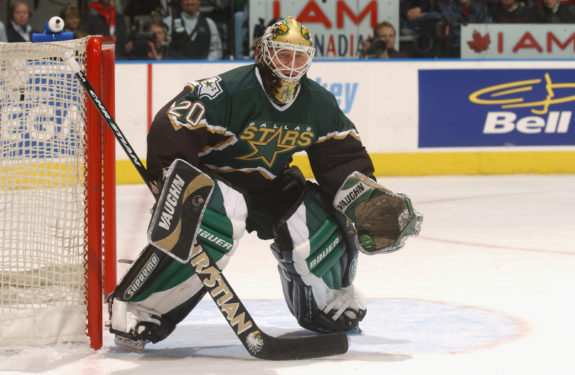
It was in Chicago where Tretiak embarked on the next phase of his career, as Belfour detailed the coach’s impact by saying:
“I had to teach myself for the most part, but we had Tretiak as our goalie coach in Chicago and he wasn’t real technical with us, but we did a lot of drills,” said Belfour, adding it was his first time in a decade of stopping pucks that he did position-specific drills.
Part of Tretiak’s game was based largely on the goalie positioning himself in the most optimal spots in his crease. By cutting down angles, playing deeper in his crease, and being able to incorporate elements of the butterfly and stand-up style, Tretiak was able to put himself in a position where he could react to most of the shots or plays thrown his way. Despite having a slight language barrier, Tretiak was able to impart his knowledge on Belfour, who had an outstanding ’90-’91 season with the Blackhawks as he went 43-19-7 with a GAA below 2.50.
Belfour went on to achieve a great amount of success in the NHL and the tutelage under Tretiak was undoubtedly a boost to “The Eagle” as he commented:
“We had an interpreter but through body language I knew what he wanted me to do,” Belfour said. “He’d put the pads on and go out on the ice with us. In fact, he had the pads on in practice one day and nobody could score on him. And Keenan wanted to start him. But he turned it down and said this is Eddie’s time. I’m still thankful for that, too.”
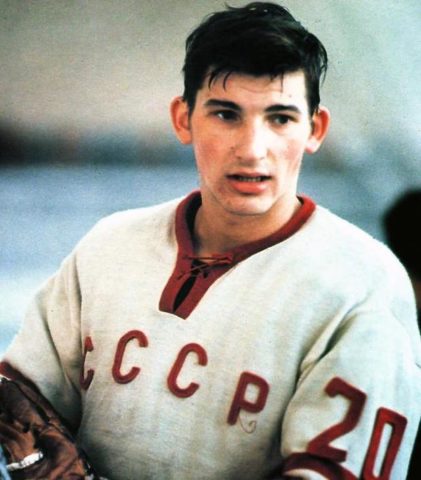
While some may happen to catch a glimpse of the back of Evgeni Nabokov’s jersey these days and see the number 20 being worn as a modern-day tribute to Tretiak, Belfour was another netminder that wore the same number in honor of his childhood idol. Even though Belfour and Tretiak were only united for one season with the Chicago Blackhawks, positional play became one of the strongest aspects of Belfour’s game as the goalie continued his NHL career with other teams. Tretiak might have only been around for one year with the Blackhawks, but Belfour refined his game throughout the years to become a better positional netminder, much like Vladislav Tretiak.
Former greats such as Phil Esposito have gone on record to say that Tretiak played too deep in his own crease, but the Soviet style of hockey (particularly goaltending) dictated that a goalie should stay in their own crease and rely on lateral movements and reflexes rather than coming out of the net to challenge a shooter. Fusing elements of the butterfly and stand-up style allowed Vladislav Tretiak to be a very successful goalie for CSKA Moskva as well as the Russian National Teams that he played for, but it was the goalie’s ability to show others the tricks of the trade that registered within the hockey community.
Tretiak Establishes a Goalie School
After his time with the Chicago Blackhawks, Tretiak established a goalie school where he tutored the likes of Martin Brodeur and Jose Theodore. While teaching older goalies that were coming into the NHL seemed to be a forte of Tretiak’s, he also established a goalie school for young children. The Vladislav Tretiak Elite School of Goaltending continues to be considered one of the best and most challenging goalie schools in Canada and across the world.
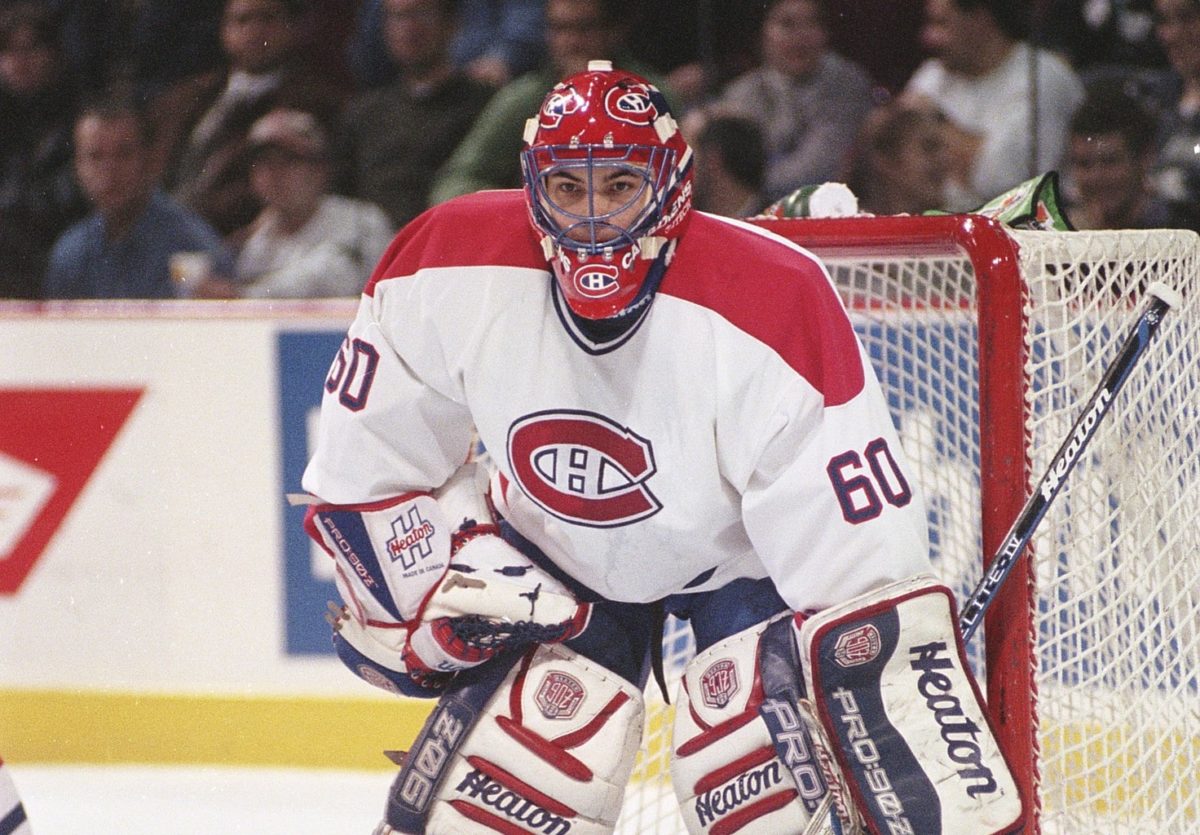
Teaching younger kids the craft of hockey goaltending can be a great reward for some and it should come as no surprise why Tretiak’s school has been consistently attracting young kids that want to learn the art of netminding. Tretiak’s name has always been mentioned alongside the goaltending greats of the ’70s and ’80s, but his impact on the hockey community has been just as powerful. Aside from working with elite goalies such as Belfour, Brodeur, Hasek, and Theodore, Tretiak has chosen to dedicate his life to enriching hockey foundations for young kids that want to make it to the NHL someday.
Teaching young kids can be a fulfilling venture for any individual whose heart is in the right place, but Tretiak has made it his goal to share his knowledge with a wide array of individuals.
Being named the President of the Russian Ice Hockey Federation was undoubtedly a huge honor that was bestowed on Tretiak during the mid-2000s and fans should expect the former netminder to avenge Team Russia’s quarterfinal ousting at the 2010 Winter Olympics in Vancouver. Under Tretiak’s tutelage, the Russian Team has won bronze and gold at the men’s ice hockey World Championships and hockey fans should expect some adjustments to be made in order to give Team Russia the best chance of succeeding at the 2014 Winter Olympics.
Vladislav Tretiak Will Always Be Considered One of the All-Time Great Goalies
Vladislav Tretiak’s historic career as a hockey player has been hotly contested by hockey fans throughout the last few decades. Some have argued that the hockey world was never able to see Tretiak’s abilities on full display against NHL talent for the course of a full season, but it was Soviet politics that prevented the netminder from ever playing overseas. While Tretiak’s inability to play in the NHL was not done of his own volition, the former goalie has done everything that he can in order to teach his trade to those willing to learn.
Tretiak was surrounded by talented forwards when he played for CSKA Moskva as well as the Russian
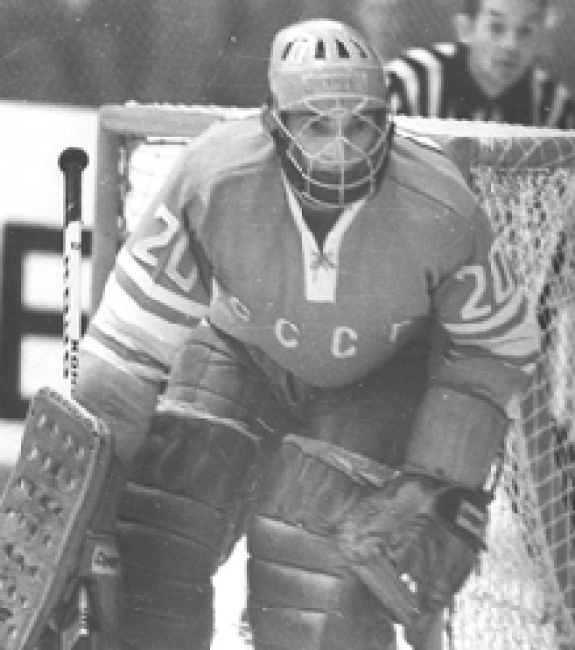
National Teams of the 70s and 80s, but one also has to take into consideration that the goalie was put into some of the most pressure-packed situations at a very young age. With Cold War tensions at a high level, Tretiak was thrust into the thick of things during the 1972 Summit Series at a mere 20 years of age. Even though the Russian teams that Tretiak played for were stacked with great offensive talent, the goalie was also exposed to a North American style of play that he was not accustomed to playing against.
After playing in the ’72 and ’74 Summit Series, Tretiak earned his stripes with a good portion of the North American hockey fan-base and he never looked back. During a time when individuals were on their heels because of a possible World War between the world’s superpowers, Tretiak, the Soviet Team, and Team Canada gave hockey fans across the world an outlet through which differences were set aside for the sake of competition. Not only did Vladislav Tretiak play himself into hockey lore during the late 1970s, he opened the door for North Americans to adopt a view of Russian hockey players that had never been imagined before.
